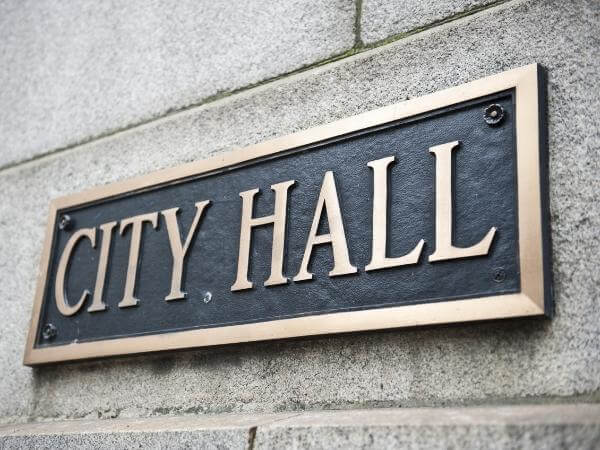The modern world is one of interconnected networks. Organizations of all shapes, sizes and verticals — including cities — rely on their IT staff to ensure data is secure and available, where and when it’s needed. And managing municipal networks is no small feat: authorities must coordinate between local government services, sanitation, emergency response, public works and infrastructure, schools, utilities and civic offices where decisions are made, records are stored and the public interacts with city staff.
But cities work under the added pressure of limited resources and local budget constraints. Unlike private organizations, civil servants and elected representatives are answerable to local citizens — meaning this connectivity must be accomplished on a limited budget. Municipal IT staff are often expected to wear many hats and achieve the same efficiency, security and connectivity that private corporations do (at a fraction of the cost) while working with a variety of only sometimes-compatible technologies and protocols.
Traditional Solutions Fall Short
None of these issues are new. Concerns about making networks and the associated services and applications highly available have been addressed by a variety of solutions in the past:
- Dedicated hardware links
- Multiprotocol Label Switching (MPLS)
- Virtual private LAN Service (VPLS)
- Wireless broadband
- Dark fiber

And in general, these technologies do facilitate cross-platform networking relatively efficiently. But not without caveats. To maintain the connectivity they need, municipal staff negotiate contracts with the expert sales teams at massive telecoms — deals that nearly always favor the telecom. Cities are paying premium prices for networks and then forced to manage networks of multiple carriers and transport methods to build solutions that meet their needs.
Municipalities deploying multiple networking solutions face rapidly increasing costs in terms of:
- Implementation and project management
- Complex networking
- Justifying the initial capital investment
- Ongoing maintenance and support contracts
- Connectivity costs – for both primary and backup circuits
In short, the efficiency boost traditional solutions offer requires the installation of dedicated hardware and software — which comes with significant capital investments and substantial ongoing maintenance costs.
And relying on any of these technologies for managing municipal networks is neither straightforward nor turnkey — deployment is complex, and integration of updates is time-consuming. These traditional solutions ultimately strain municipalities that lack the time, personnel and resources to support such a network.
Municipalities Face Multiple Trade-Offs
The traditional solutions for managing municipal networks often force officials to make sacrifices during deployment and when changes are required.
Slow, inefficient networks that are inexpensive but offer inferior service and unreliable access to critical infrastructure
Spending an outsized share of limited resources to deploy and maintain a complex, costly network that will support rapid, efficient activity
Quick and dirty additions that are unstable and insecure, introducing new risk to private or sensitive data
Significant delays while necessary hardware and software or network links are configured and integrated into the network
But what if there was a better way?
- What if municipalities seeking to connect the various functions and services they oversee didn’t have to choose between simplicity and efficiency?
- What if new stable, secure connections could be added to municipal networks in a timely, cost-effective manner?
SD-WAN for Managing Municipal Networks
Authorities looking to simplify managing municipal networks have an alternative to traditional networking solutions’ compromises. Complex, difficult-to-maintain networks with dedicated links can be replaced with solutions like Turnium SD-WAN, which offers:
- Cloud-based on-demand network management
- Replacement of VPN-based solutions with automated software-defined networks
- Built-in failover to keep data and critical data and sessions connected
- Simple deployment, management and control with end-to-end visibility of network performance
- Hassle-free connectivity and load balancing with reduced time to deploy, manage and troubleshoot
- Integration of existing private L2 wireless and other networks
- Prioritization of critical data and high-availability using multiple carriers and transport methods
- Internet-based infrastructure in place of costly dedicated links and hardware
SD-WAN solutions eliminate the need for municipal staff to understand, design, deploy and maintain complex networks — allowing them to focus on their primary responsibilities and key deliverables.
How Can Municipalities Use SD-WAN?
Many use cases support the use of SD-WAN to simplify managing municipal networks.

Emergency Services
Every municipality needs to provide emergency services — including police, EMT and fire response — all connected to a dispatch system and the 911 services provided by local telecoms. Lives are literally on the line with this service, and a delay in communications can result in tragedy.
Traditional Solutions
- Focus on dedicated lines and high bandwidth for facilities, extending to mobile (4G and LTE) and Internet of Things for first responders
- Come with high costs for both installation and maintenance
SD-WAN
- Integrates existing connections, broadband where needed, IoT and wireless networks to maintain connectivity and reliability
- Eliminates delays caused by data translation between disparate technologies
- Cost-effective
Networking Municipal Vehicles
Many cities and towns maintain a fleet of vehicles for various purposes, including:
- Emergency services (police cars, ambulances, fire trucks)
- Service vehicles (garbage trucks, snow removal vehicles)
- Passenger vehicles (buses)
Coordinating these vehicles involves tracking locations, routes, speed, breakdowns and accidents. Connecting all these vehicles into a single network using WAN and LTE technologies gives authorities seamless, transparent oversight — without the hassles of traditional network management.
Temporary, Remote and Unmanned Sites
Municipal authorities often engage in temporary construction projects, repairs, renovation and landscaping. These projects need on-site management connectivity to central offices on the main municipal network.
Temporary Sites
- Often go without data because of the hassle and expense of deployment and network reconfiguration
Unmanned Sites
- Sometimes difficult to access
- Needs connectivity that doesn’t depend on regular maintenance
Remote Sites
- Often challenging to access, frequently unmanned
- Connectivity errors can be challenging and expensive to address
The Ultimate Solution for Managing Municipal Networks
An SD-WAN solution like Turnium is designed to handle exactly these types of challenges:
- Securely connect using existing networking infrastructure
- Self-contained for easy deployment and shutdown on temporary sites
- Robust, reliable and failover-safe
- Seamless bonding of multiple connections to guarantee connectivity
Turnium takes the complexity out of managing municipal networks by automating and simplifying formerly complicated and challenging networking tasks and eliminating dependency on existing infrastructure.
Traditional Solutions
- High costs for hardware, installation and maintenance
- Requires expert personnel on staff
Turnium Trusted Network as a Service
- Minimal expense
- No costly hardware or connectivity upgrades
- No need for expert staff
- Increased flexibility
- Facilitates greater responsiveness
In short, Turnium SD-WAN allows municipal staff to focus on their areas of expertise — rather than on managing municipal networks — increasing their ability to focus on key deliverables, supporting their colleagues, elected officials and constituents.
Contact the experts at Turnium today to discuss your networking needs and how we can help.
